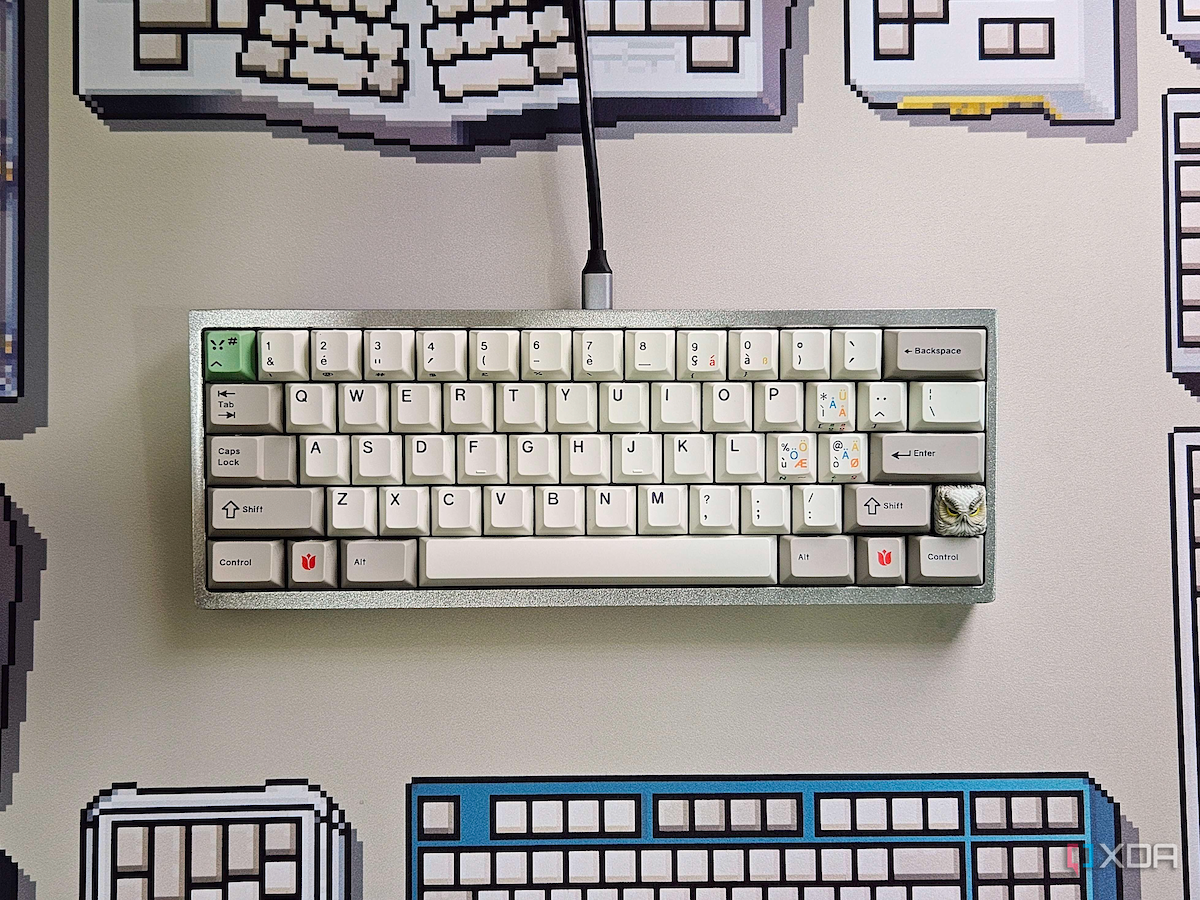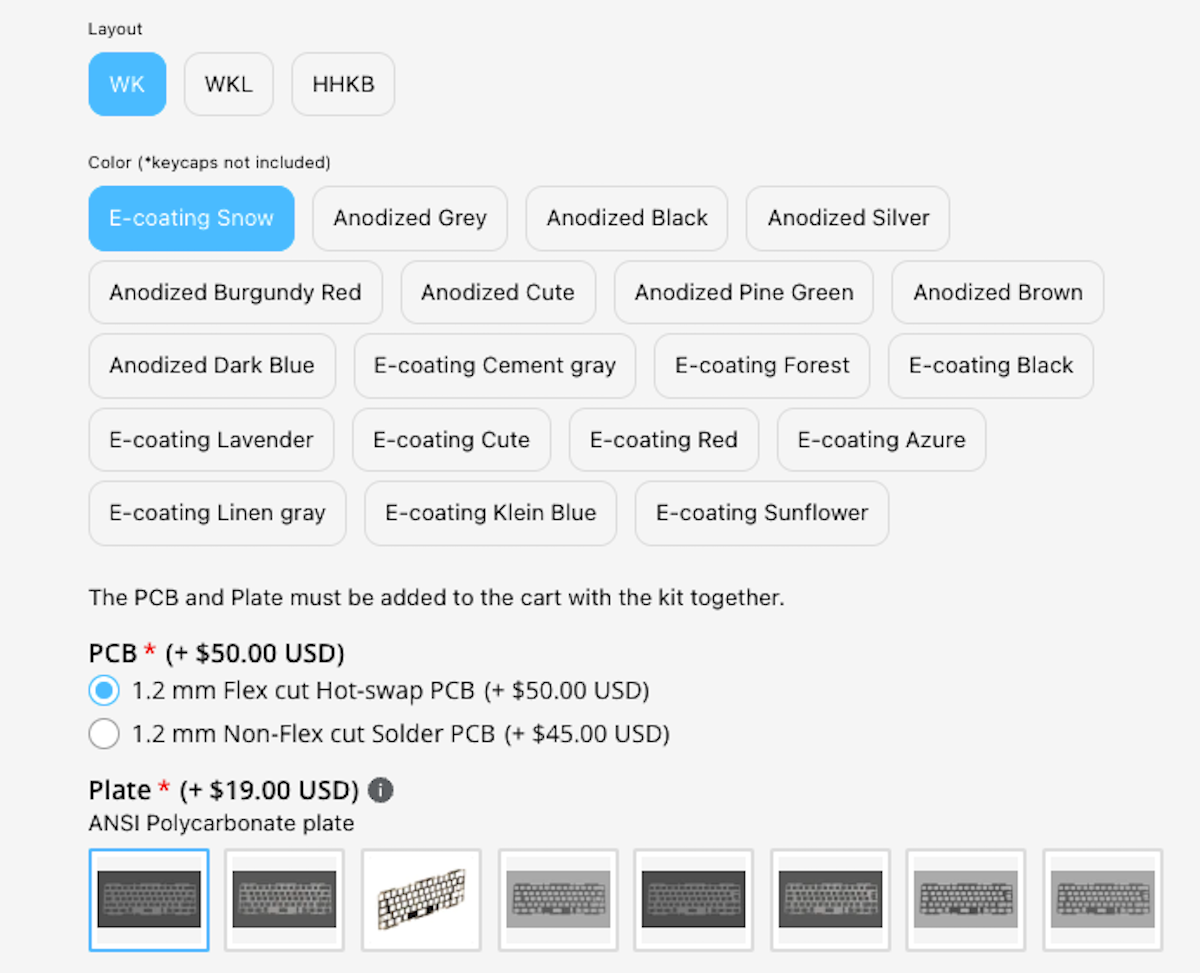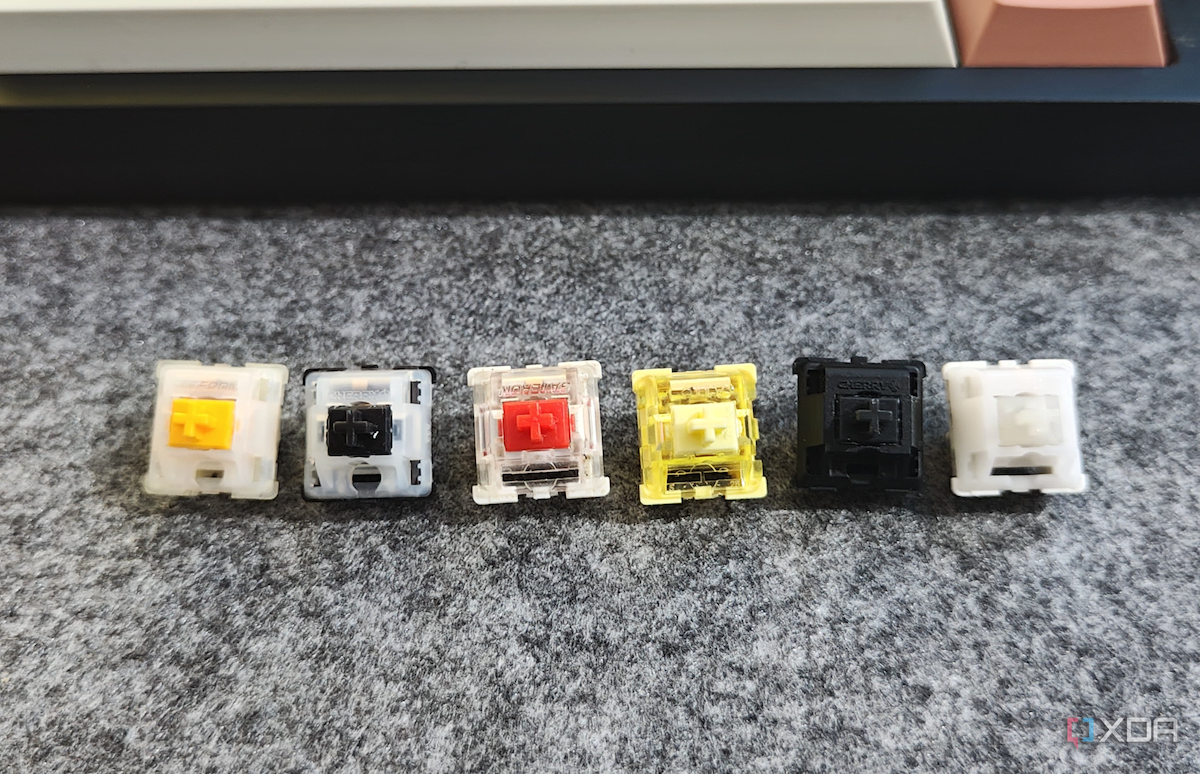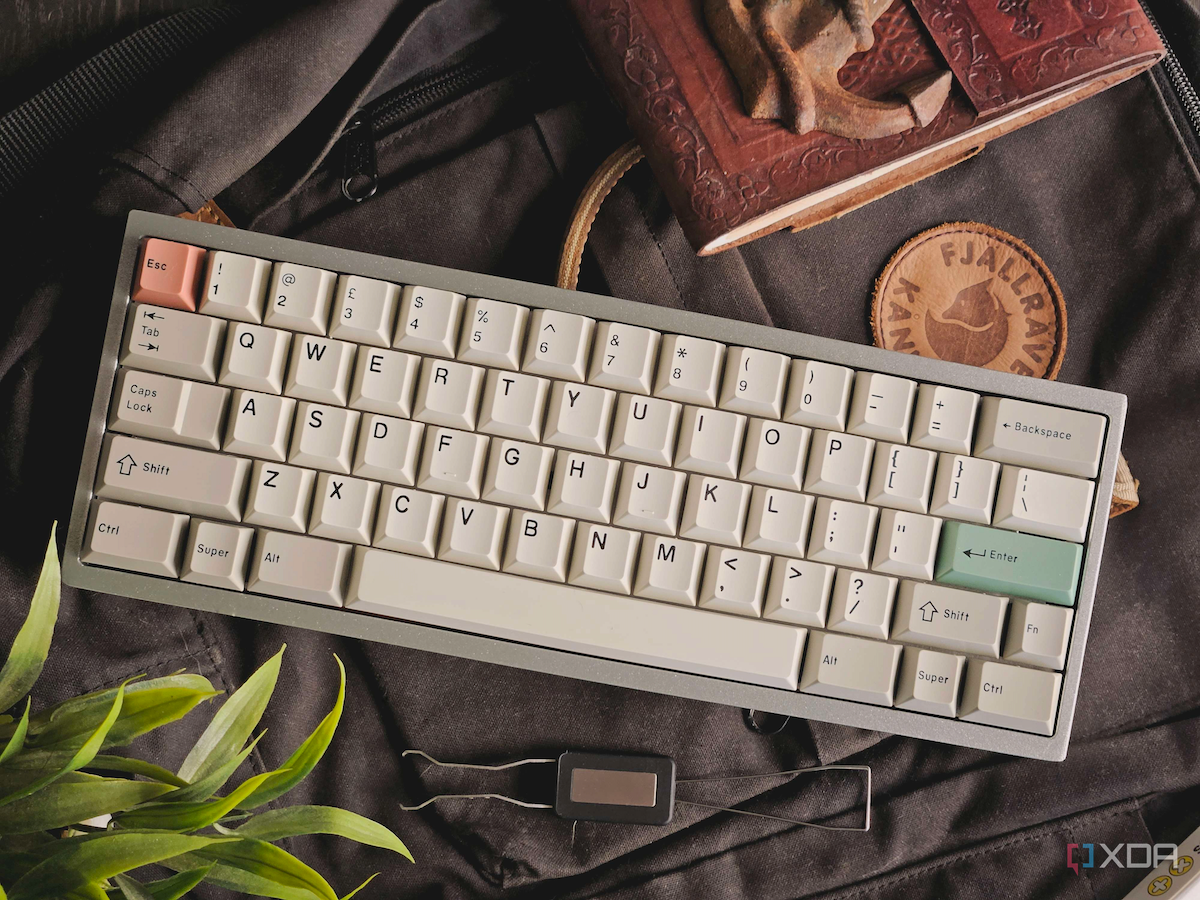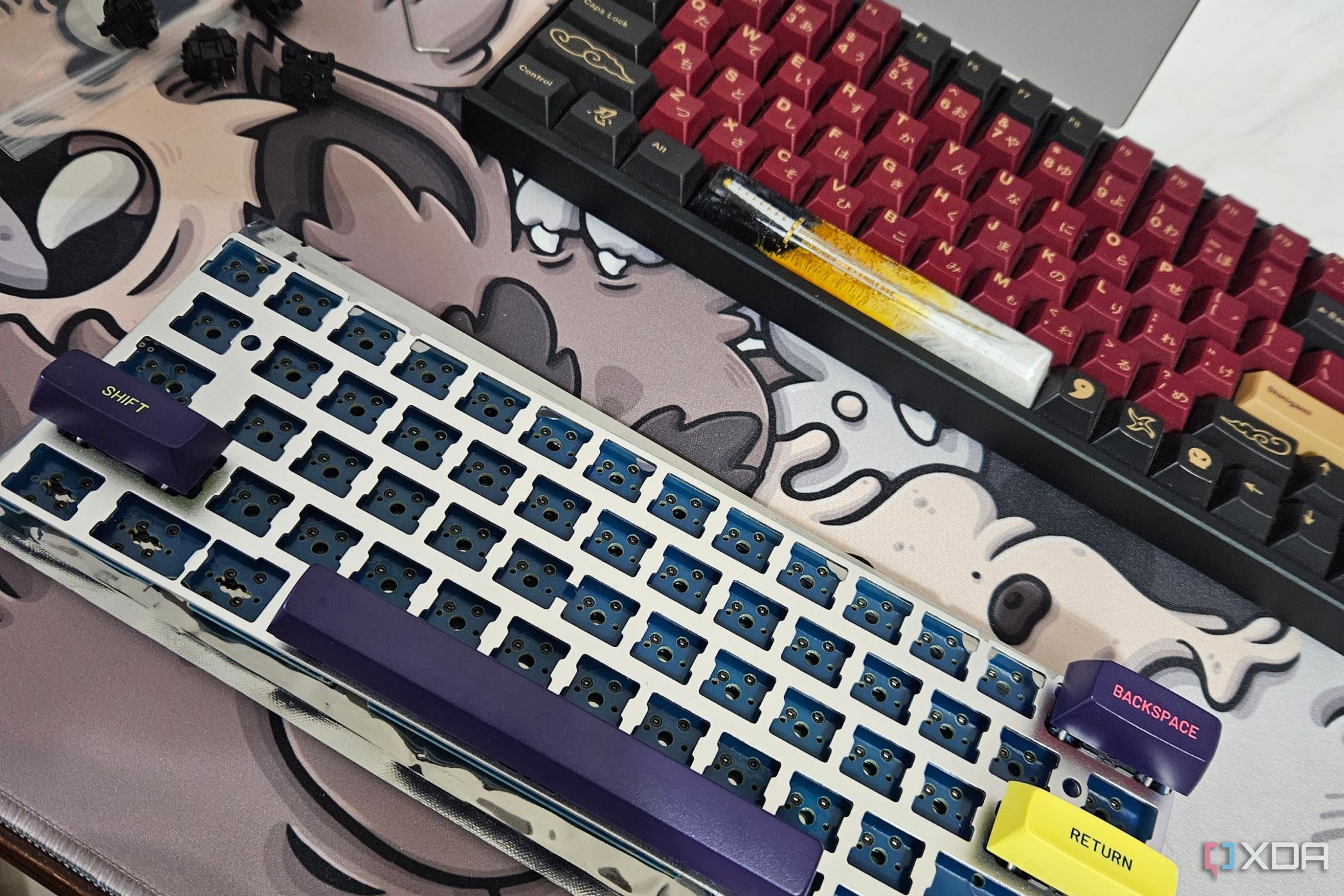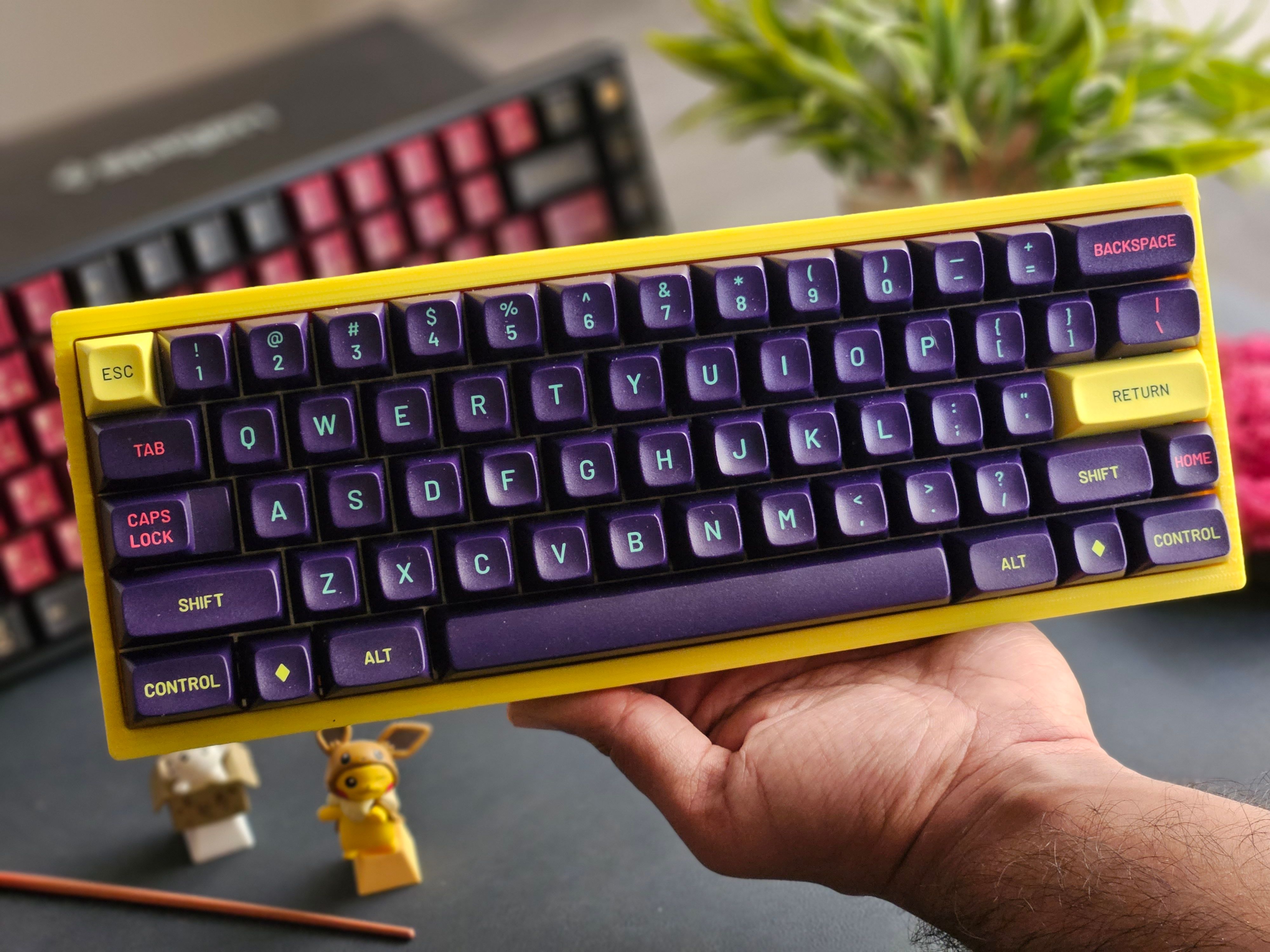I've been using mechanical keyboards for as long as I can remember, but it wasn't until recently that I started building custom keyboards instead of just buying them off the shelf. In fact, my quest to find a good mechanical keyboard ended only after I built one myself.
As I've found during my journey, it's almost always a better idea to buy a custom keyboard instead of getting a pre-built one. And you don't need a ton of technical knowledge, either! Here's why you should think about taking the plunge.
1 You can pick your own parts
The entire process of building a keyboard starts with a base, which you can upgrade over time to make it better. I recommend picking a DIY kit, sometimes called a barebones kit, if you're new to the world of keyboards, as they include all the core components. Sure, you can buy a custom keyboard fully assembled, but if you get a barebones kit, you get to customize all the parts to match your preferences. Everything from the case and the plate materials to how the plate is mounted to the frame can make a huge difference in performance and sound. You can't customize any of this in most mainstream keyboards that come pre-assembled.
For example, there are kits for the Tofu60 2.0 from KBDfans or any of the premium kits from Mode Designs that arrive at your doorstep in parts. Alternatively, you can also go with the more barebones version of, say, the Keychron Q1 Pro, which lets you put on your own keycaps and switches but comes mostly put together. These kinds of kits are still customizable, though, so you can take them apart down the line.
You can pick up a kit that uses gasket mounting instead of a regular plate mount for a significantly softer typing experience. You can also play around with the acoustics of the keyboard by experimenting with plate materials, foams, and other modifications. You can order a lot of these parts at the same time as your kit, but there are stores that specialize in specific parts, like stabilizers, sockets, and other tools.
2 Explore different switches
Switches are arguably the heart of a keyboard, and picking the right switch can be a bit overwhelming due to the sheer number of options out there. Your keyboard kit might come with switches, but there's no reason to stick with stock. I'm not saying that all the switches you get with a pre-built keyboard are bad or unusable, but you open yourself up to a massive pool of mechanical switches by picking your own parts.
For example, if you like the stock linear switches that come with your keyboard, then wait until you try something like Gateron Oil King or the Milky Yellow Pro switches. Cherry's new MX2A switches also look very promising as an iteration on the very popular Cherry MX switch line. Those who tend to lean more toward tactile switches can consider trying something like the Durock T1 or the Akko Jelly Blue. These aren't the most premium switches out there, but they're arguably better than what most mainstream keyboards ship with, which goes to show that you also don't have to spend a lot to get what you need.
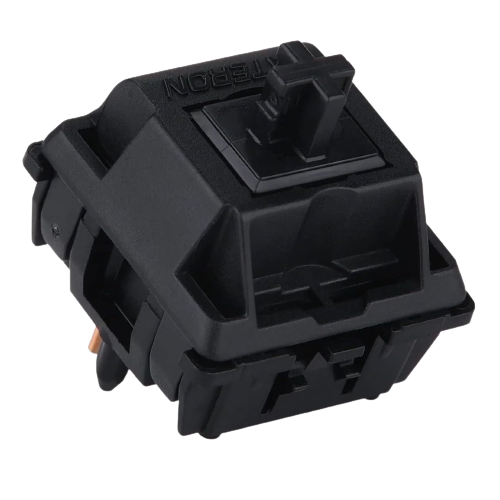
Gateron Oil King switches
These are 5-pin mechanical switches that can be easily installed on keyboards with PCB that accept MX-style switches. These linear switches have 55g springs, and they're pre-lubed for a smooth experience.
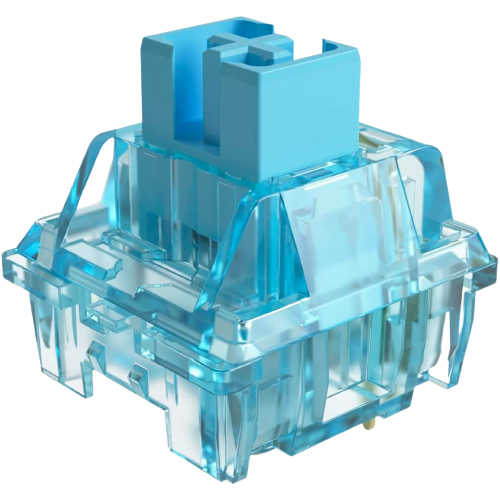
Akko Jelly Blue switches
These budget tactile switches from Akko have square-shaped stems that reduce overall switch wobble and prevent dust from getting in. These switches have 40g springs for a lighter and more comfortable typing experience.
Alternatively, you can buy switch tester packs for a few bucks before spending a good chunk on a full pack of switches. Just make sure you pick up a kit with a hot-swappable PCB that allows you to swap the switches easily with a switch puller, and you should be good to go. Using custom switches means that you also have the option to hand-lube them for a better typing experience.
3 Customize it to your heart's content
This section is all about putting the "custom" in the custom keyboard. It can be something as basic as the keycaps you put on the switches or something more advanced like the springs, but all can alter the typing experience. Of course, you can add custom keycaps or use a custom cable with your existing keyboards too, but you may eventually hit a wall while trying to customize a pre-built board. There are tons of variables to consider, like switch compatibility, interference, layout support, keycaps profile, and more, so it's better to work on your own board so you can pick out the compatible parts yourself.
Plus, you can modify them later. Even tuning and lubing the stabilizers that go into your keyboard can make a huge difference since it can eliminate rattling and ticking noises that come from the bigger keys, like the space bar. Or adding foam inside the kit can reduce the overall echo. There are a lot of options.
Here's a keyboard I was able to put together from scratch, from 3D printing the case in a color that matched my theme to picking the right switches to go with the mounting style and the aluminum plate.
Pre-built keyboards that are readily available from mainstream brands leave only so much room for customization and upgrades, forcing you to entirely ditch them in favor of something new as opposed to simply replacing a single component that you don't like or want to upgrade.
4 Leave room for future upgrades
The best thing about a DIY project like this is you get to learn about a particular product after using it, so you can always go back and swap something out or upgrade to a relatively better part. This is arguably better and more cost-effective in the long run than entirely replacing a board. You can even plan your upgrades and modifications over time to turn even a budget kit into a keyboard that looks and feels significantly better than a $200 mainstream option.
Plus, not all keyboards and their corresponding upgrades have to be expensive. You can pick up a fully customizable keyboard kit for as low as $75, and it'll only get better with more components. There are lots of budget brands out there offering great value-for-money kits. Almost all modern kits are very user-friendly and are very easy to put together, so you really don't need a lot of knowledge or expertise to finish a build.
Build your next mechanical keyboard instead of buying one
I often draw parallels between building a keyboard and a custom PC. Like a PC, you're buying a base or a platform that can be turned into something better — or more powerful — than you originally thought. I remember turning my humble Keychron K2V2 into an awesome keyboard the same way I upgraded my budget PC into a significantly better gaming rig in a few years. It's about the experience and tweaking things to your liking instead of settling for whatever a manufacturer thinks is best for you. You are also likely to end up with a much better product and maybe even a new hobby at the end of it all.

